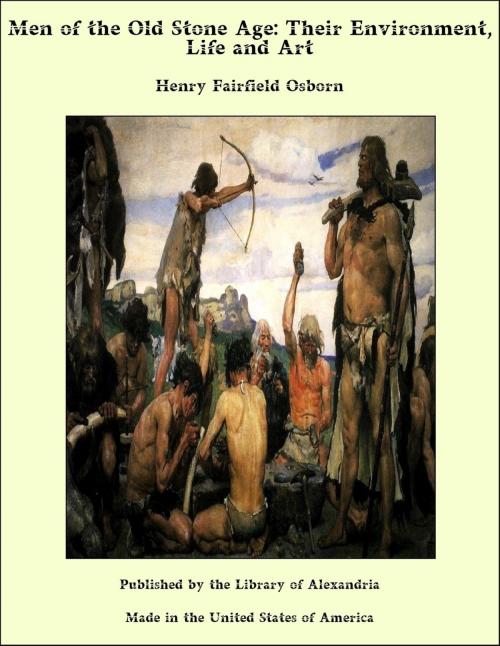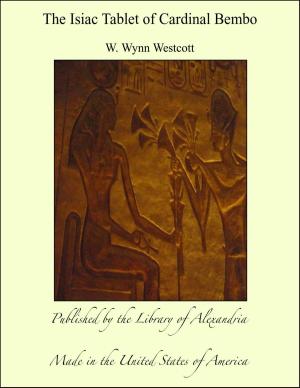Men of the Old Stone Age: Their Environment, Life and Art
Nonfiction, Religion & Spirituality, New Age, History, Fiction & Literature| Author: | Henry Fairfield Osborn | ISBN: | 9781465605085 |
| Publisher: | Library of Alexandria | Publication: | March 8, 2015 |
| Imprint: | Language: | English |
| Author: | Henry Fairfield Osborn |
| ISBN: | 9781465605085 |
| Publisher: | Library of Alexandria |
| Publication: | March 8, 2015 |
| Imprint: | |
| Language: | English |
The history of this region and its people has been developed chiefly through the genius of French archæologists, beginning with Boucher de Perthes. The more recent discoveries, which have come in rapid and almost bewildering succession since the foundation of the Institut de Paléontologie humaine, have been treated in a number of works recently published by some of the experienced archæologists of England, France, and Germany. I refer especially to the Prehistoric Times of Lord Avebury, to theAncient Hunters of Professor Sollas, to Der Mensch der Vorzeit of Professor Obermaier, and to Die diluviale Vorzeit Deutschlands of Doctor R. R. Schmidt. Thus, on receiving the invitation from President Wheeler to lecture upon this subject before the University of California, I hesitated from the feeling that it would be difficult to say anything which had not been already as well or better said. On further reflection, however, I accepted the invitation with the purpose of attempting to give this great subject a more strictly historical or chronological treatment than it had previously received within the limits of a popular work in our own language, also to connect the environment, the animal and human life, and the art. This element of the time in which the various events occurred can only be drawn from a great variety of sources, from the simultaneous consideration of the geography, climate, plants and animals, the mental and bodily development of the various races, and the industries and arts which reflect the relations between the mind and the environment. In more technical terms, I have undertaken in these lectures to make a synthesis of the results of geology, palæontology, anthropology, and archæology, a correlation of environmental and of human events in the European Ice Age. Such a synthesis was begun many years ago in the preparation of my Age of Mammals, but could not be completed until I had gone over the territory myself. The attempt to place this long chapter of prehistory on a historical basis has many dangers, of which I am fully aware. After weighing the evidence presented by the eminent authorities in these various branches of science, I have presented my conclusions in very definite and positive form rather than in vague or general terms, believing that a positive statement has at least the merit of being positively supported or rebutted by fresh evidence. For example, I have placed the famous Piltdown man, Eoanthropus, in a comparatively recent stage of geologic time, an entirely opposite conclusion to that reached by Doctor A. Smith Woodward, who has taken a leading part in the discovery of this famous race and has concurred with other British geologists in placing it in early Pleistocene times. The difference between early and late Pleistocene times is not a matter of thousands but of hundreds of thousands of years; if so advanced a stage as the Piltdown man should definitely occur in the early Pleistocene, we may well expect to discover man in the Pliocene; on the contrary, in my opinion even in late Pliocene times man had only reached a stage similar to the Pithecanthropus, or prehuman Trinil race of Java; in other words, according to my view, man as such chiefly evolved during the half million years of the Pleistocene Epoch and not during the Pliocene.
The history of this region and its people has been developed chiefly through the genius of French archæologists, beginning with Boucher de Perthes. The more recent discoveries, which have come in rapid and almost bewildering succession since the foundation of the Institut de Paléontologie humaine, have been treated in a number of works recently published by some of the experienced archæologists of England, France, and Germany. I refer especially to the Prehistoric Times of Lord Avebury, to theAncient Hunters of Professor Sollas, to Der Mensch der Vorzeit of Professor Obermaier, and to Die diluviale Vorzeit Deutschlands of Doctor R. R. Schmidt. Thus, on receiving the invitation from President Wheeler to lecture upon this subject before the University of California, I hesitated from the feeling that it would be difficult to say anything which had not been already as well or better said. On further reflection, however, I accepted the invitation with the purpose of attempting to give this great subject a more strictly historical or chronological treatment than it had previously received within the limits of a popular work in our own language, also to connect the environment, the animal and human life, and the art. This element of the time in which the various events occurred can only be drawn from a great variety of sources, from the simultaneous consideration of the geography, climate, plants and animals, the mental and bodily development of the various races, and the industries and arts which reflect the relations between the mind and the environment. In more technical terms, I have undertaken in these lectures to make a synthesis of the results of geology, palæontology, anthropology, and archæology, a correlation of environmental and of human events in the European Ice Age. Such a synthesis was begun many years ago in the preparation of my Age of Mammals, but could not be completed until I had gone over the territory myself. The attempt to place this long chapter of prehistory on a historical basis has many dangers, of which I am fully aware. After weighing the evidence presented by the eminent authorities in these various branches of science, I have presented my conclusions in very definite and positive form rather than in vague or general terms, believing that a positive statement has at least the merit of being positively supported or rebutted by fresh evidence. For example, I have placed the famous Piltdown man, Eoanthropus, in a comparatively recent stage of geologic time, an entirely opposite conclusion to that reached by Doctor A. Smith Woodward, who has taken a leading part in the discovery of this famous race and has concurred with other British geologists in placing it in early Pleistocene times. The difference between early and late Pleistocene times is not a matter of thousands but of hundreds of thousands of years; if so advanced a stage as the Piltdown man should definitely occur in the early Pleistocene, we may well expect to discover man in the Pliocene; on the contrary, in my opinion even in late Pliocene times man had only reached a stage similar to the Pithecanthropus, or prehuman Trinil race of Java; in other words, according to my view, man as such chiefly evolved during the half million years of the Pleistocene Epoch and not during the Pliocene.















